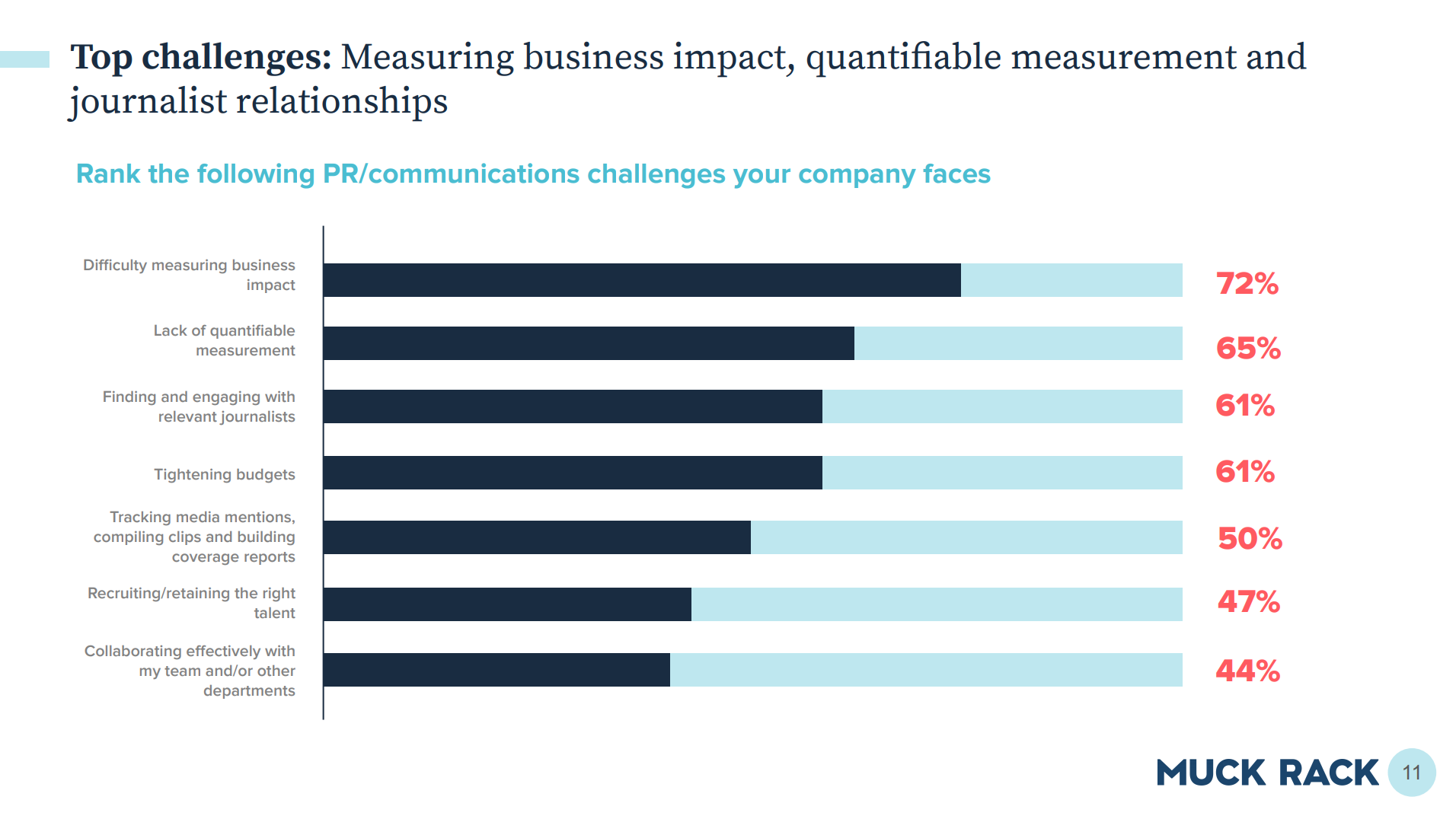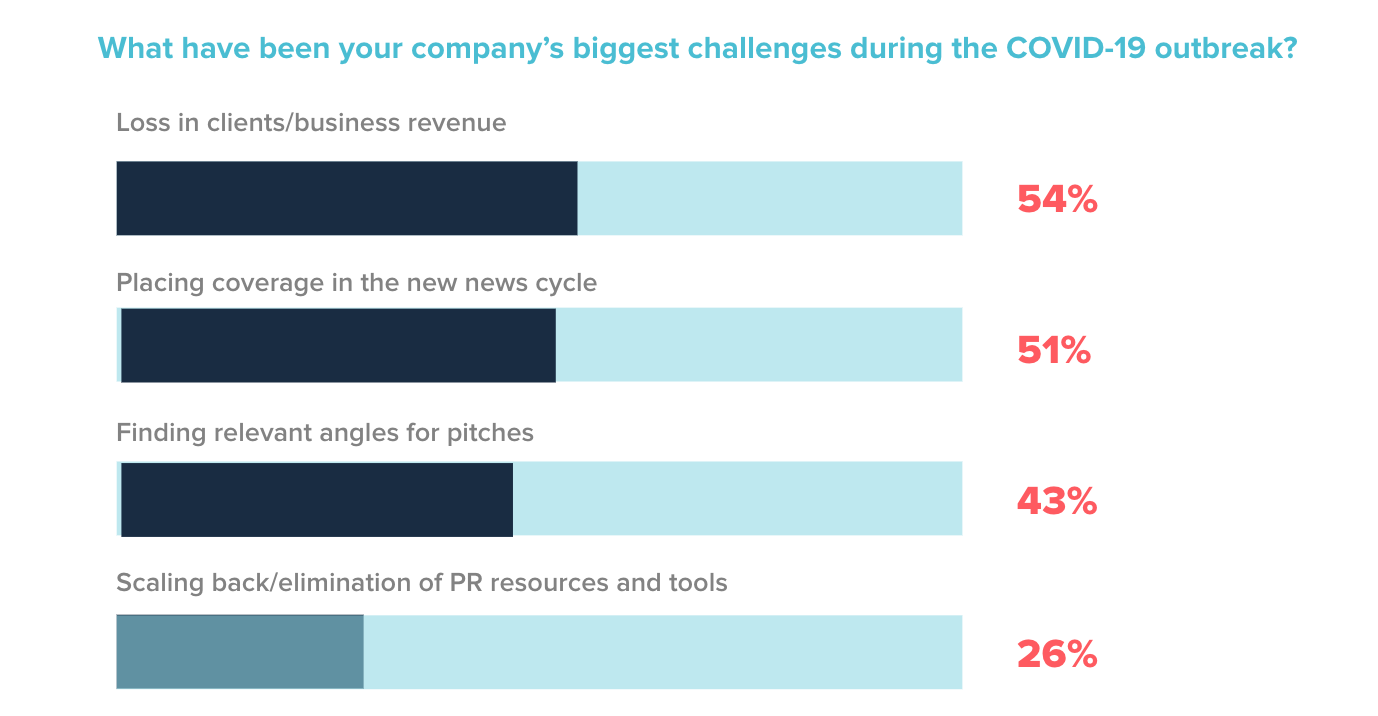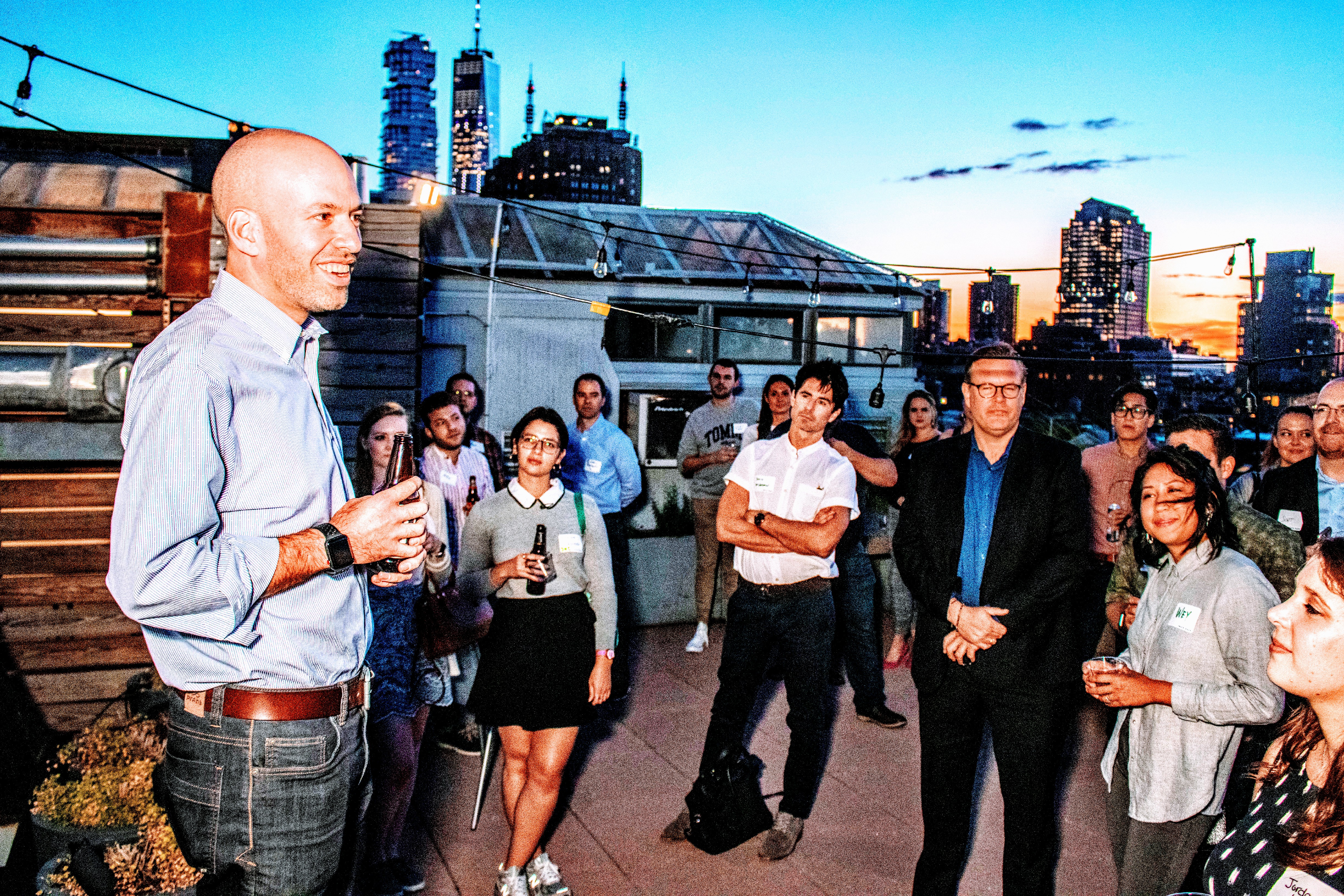In the world of public relations, the high paced intensity of gaining favor, and maintaining interest with the public eye, is strenuous work. Moving about in a fashion, where one must continuously be up-to-date with the latest issues, fads, technology, and trends of the greater public, can be rather grueling. Public relations is just that, immersed in the larger public. Thus, one can only imagine the level of stress and intensity, those in the PR industry are having to grapple with. Working away from the public in order to align with the current times; all the while having to innovate new strategies in being just as effective and widespread, during times of face-to-face interaction, with the greater community.

In the world of teamwork, within the PR industry, human interaction is an essential part of the work. One cannot truly convey the greater context of human thought and experience for certain topics, without fully connecting with human breath, and human touch. In fact, being removed from this creates a kind of barrier with the general public. Thereby, slowing one’s ability to operate in the full range, required in the public relations industry. This, in itself, leads to increased stress, and an array of tension. Furthermore, finding solutions to offset any delays, during this current corona epidemic can further increase intensity in the PR world.
In an interview with Muck Rack Co-Founder and CEO, GREG GALANT, we explore these current challenges in the Public Relations industry. Furthermore, we also examine how Muck Rack is tapping into its own source of wellness magic, in order to continue productivity, while being temporarily separated from public gazes, of a physical hue.
Lauren K. Clark: If you were to list some of the major concerns of maintaining a strong, public relations team from afar, what would they be?
Greg Galant: The most common concerns we’ve heard from PR teams stem from difficulty collaborating. It’s been easier for some, than others. At one end of the spectrum, there are PR teams, who are already working remotely, or at least had technology, systems and processes, that enable transparency and autonomy, even during a pandemic. On the other hand, there are teams, who were reliant in being in the same room–they’re now learning new technologies from video conferencing to collaboration and productivity tools to replace-in office collaboration. Shouting to the next cubicle over is no longer an option.
We’ve also heard from managers that it is often more challenging to understand what their team is working on, without micromanaging or stepping on toes. Its also more difficult for managers to recognize employee burnout, be it due to work conditions and/or personal challenges.
And of course, morale is a common concern, especially during a time, when there is both economic uncertainty and greater difficulty getting coverage. There is no silver bullet for motivating a PR team, but things we’ve seen work well, include more check-ins with with team members (formal catch ups and just informally checking in), celebrating wins, and leading by example, by keeping a level head.
“Overall, we would not say that social distancing has helped to diminish stress for PR professionals. Most PR pros are very social creatures, which can make the switch to social distancing especially tough.”
Greg Galant, Co-Founder and CEO of Muck Rack
Lauren K. Clark: Prior to the corona epidemic, what were some of the main stressors in public relations? What are the current stress-related issues during COVID-19? Would you state that the current state of affairs is giving Public Relations the opportunity to create more wellness centered environments? If so, please explain more.
Greg Galant: Based on our experience and research (especially the State of PR 2019), the most common challenges for PR teams before COVID-19 were difficulties measuring business impact, quantifying measurement, managing journalist relationships and dealing with tightening budgets.

Greg Galant: When we recently surveyed over 1000 PR professionals about the top challenges/stressors they are facing during COVID-19, loss in business revenue and difficulty placing coverage were the top challenges.

It’s important to remember that public relations has always been a demanding (and, for many, stressful) career. It’s even been labeled as the eighth most stressful job in America. Without economic uncertainty, the average agency turnover rate is nearly 25%.
While PR itself may remain, at least, as stressful as before for many, we’re optimistic that there is a newfound opportunity for PR teams to better help their employees thrive, and we’ve seen examples of forward-thinking brands and agencies leading the way. As the saying goes, “The future is already here. It’s just not evenly distributed yet.”
More businesses than ever before have an opportunity to rebuild processes and reset priorities. The most significant shift we’ve seen recently is permanent work-from-home policies. These could be a big help in creating a more wellness-centered and less stressful environment for PR pros. Since PR is often a 24/7 job, giving professionals time back in their day from not having to commute to and from work could allow them to get more done during normal business hours.
The elephant in the room is economic uncertainty. While there is new opportunity for many, some businesses have already had to cut staff and pay. These situations are often unique to the business and can pose obstacles to creating a more wellness-centered environment, both in terms of team attitudes and actions.
Lauren K. Clark: What is the irony of social distancing having diminished the level of stress in the public relations sector?
Greg Galant: Overall, we would not say that social distancing has helped to diminish stress for PR professionals. Most PR pros are very social creatures, which can make the switch to social distancing especially tough. That said, PR pros are also more used to dealing with the unexpected than most.
It’s possible to argue that social distancing has diminished stress for some who focus on, say, event logistics and large, in-person press briefings. Most PR pros who we’ve talked to, who are focused on in-person events, would rather be dealing with the stress and logistics over dealing with more competing virtual events than ever before.
There might also be a bit of silver lining: unexpected constraints often lead to creative ideas and we’ve seen a lot of that across the industry with how folks are restructuring previously scheduled in-person events, workshops, and award shows.

Lauren K. Clark: Within the PR, what would Muck Rack suggest are healthy strategies that team members can use in transforming the world of public relations into a healthy environment?
Greg Galant: Leaders in PR can create a healthy environment by taking steps to prevent burnout long before they see the signs of it. If managers wait to address burnout, they may be too late; lose otherwise competent employees, and create more stress for the rest of the team.
It’s important, especially now, for managers to carve out time for their employees to connect outside of regularly scheduled projects.
Challenging the status quo can be intimidating for employees. So as a manager it’s important to lead by example and have regular 1-1s with your team where they feel comfortable to discuss any unforeseen issues.
Lastly, in an industry that is subject to constant change, setting attainable goals that are measurable and celebrating those wins can go a long way in reducing stress and burnout.
Lauren K. Clark: During Muck Rack’s podcast, “How to operate a remote PR team,” (on April 28, 2020, 3pm ET/12pm PT) Steph Donily (Head of Communications at Zapier) mentioned how her PR team has previously been adjusting in working remotely. “So, as I mentioned earlier, we’ve been remote from the very beginning. So, kind of like Justin’s team. We haven’t seen a lot of disruption, in terms of how we work. We pretty much live on Slack and Zoom over at Zapier. So, our days are really filled with a lot of video conferencing. We’ve learned how to brainstorm, remotely a while back. I have a teammate based in Toronto, a teammate in LA, a teammate on the East Coast, and a teammate here in Portland with me. We’ve pretty much figured out how to play that calendar tetress, and brainstorm with each other; while also setting aside time to work independently.” Do you think the world of PR will have this new sector, and will it continue to flourish, once COVID-19 is finished (as described by Donily)?
Greg Galant: Similarly to Steph’s team at Zapier, Muck Rack has been a remote-first company for over 10 years. We figured out a long time ago that there are numerous benefits to giving employees the ability to control where they work from. As an added bonus, this has also meant that we’ve been able to hire amazing talent, even if they do not live in commuting distance of our NYC HQ.
The trend of remote work has been on the upswing even before COVID-19. In a 2019 survey, FlexJobs and Global Workplace Analytics found that between 2005 to 2017, there was a 159% increase in remote work. In 2015, 3.9 million U.S. workers were working remotely. Today, that number is at 4.7 million, or 3.4% of the population. An effective remote work policy needs to come from the top down and since leadership at most organizations are focused on making their remote teams successful right now, there will be an increase in remote work policies or at least a hybrid approach.
Lauren K. Clark: What do you feel will be some of the re-structuring, that will take place in decreasing the amount of burnout, occuring in the PR industry?
Greg Galant: Other than remote work, we hope that there is an opportunity for PR teams to increase focus on social good campaigns and activities that get the word out, while providing value. The current crisis doesn’t discriminate by industry or geography—PR pros working with all sorts of businesses have an opportunity to give their work additional purpose and create value for audiences they might not even have before considered.
All of this is not to say that a focus on social good is a solution for burnout, but newfound purpose can at last be an antidote to motivation woes.
And even if there will be some restructuring, that doesn’t necessarily mean that employees won’t feel any type of stress or burnout at some point. You can’t control every aspect of your teams’ lives, but you can help prevent burnout and frustration by checking-in with each team member regularly, leading by example for work-life balance and by celebrating wins—even the small ones.

Lauren K. Clark: Has Muck Rack explored any developments as it pertains to developing more powerful ways of outreach, without causing a strain for workers?
Greg Galant: Definitely! On the tech side, we’ve long prioritized building software, that isn’t a burden to use. The legacy solutions many PR teams still use create a lot of extra strain due to interfaces that are non-intuitive, disjoined workflows, and incorrect information.
Strain reduces and collaboration skyrockets when a team can work from a common platform and they can trust the information they’re looking at. While Muck Rack has long offered PR teams a platform to better collaborate, we’re making a variety of enhancements to the platform that help PR pros get more of their data out of siloed spreadsheets and into a single source of truth and enable teams to showcase their hard work for stakeholders.
Lauren K. Clark: If we were to go down a journey of personal imagination, how would you describe the creative sector’s re-defining of the PR industry? What would be some of the latest innovations in bringing balance and meditation to the sector?
Greg Galant: Leading through a lens of empathy is a crucial skill to have in PR, but I think people will be exercising it a lot more from now on because of this situation. This doesn’t mean just being flexible and being understanding with your team about deadlines and priorities, but also communicating thoughtfully to the media and empathizing with their current stressors at play.
Lauren K. Clark: Again, on Muck Rack’s Livestream podcast,”How to operate a remote PR team,” Keely Spillane (Head of PR & Communications) of Nerdwallet, mentions the role of management leadership, while reminding members of the team the importance of their presence to the project. During this time of social distancing, how would you describe the significance for PR leaders to protect their own emotional and mental balance? How does this, in turn, benefit the team?
Greg Galant: Pretty much everyone is under some form of strain, whatever their immediate circumstances. A leader is limited in their ability to set up and handle the unexpected if they can’t protect their own emotional and mental balance. A balanced leader can help tackle the challenges a team faces. With current stressors in play, it is especially important that leaders take the necessary steps to protect their own well-being.
For the most part, your team is going to follow your lead. If you’re working all the time, they’re going to feel like they need to work all the time, too. If you’re stressed all of the time, they’re going to be more likely to associate the work they’re doing with your stress (directly and indirectly). And it’s pretty tough to spot burnout if you’re burnt out yourself.
Lauren K. Clark: If PR teams spent more time using their platforms in presenting mental well-being, in business relationships with their clients, how would this increase business production and leads?
Greg Galant: Broadly speaking, if everyone operated through a lens of empathy, there probably would simultaneously be less stress and an increase in business performance. If all media relations professionals focused on reaching out to journalists with thoughtfulness, it would help create better relationships with journalists, and produce more coverage for their brand or client.
Lauren K. Clark: Imagine a PR team getting together, during social distancing, to spend journal writing time, meditation, and other healthy practices, together. How do you think this would bring strength to the team, while being away?
Greg Galant: It’s important for organizations to regularly hold team building exercises, especially in the current environment. When teams meet for an event, whether it’s to journal or meditate, it creates a sense of community and connection for everyone involved. A sense of connection and community helps people enjoy their jobs and do better work.
At Muck Rack, we’ve been hosting game nights, team lunches, “Nailed it” cooking competitions, trivia, and more. We’ve seen the benefits of taking a break out of the week to come together and share a virtual laugh.

Lauren K. Clark: Name 3 colors, patterns, or designs, that you feel best describes the PR industry. Why are these three descriptors the most suitable?
Greg Galant: If we were to choose 3 colors or patterns to describe PR it would be tartan, houndstooth, and blue.
Both tartan and houndstooth are patterns that are a bit chaotic. At the same time, the general design remains interconnected. The media industry is constantly changing and evolving, while still being strongly rooted in relationships.
The color blue commonly represents dependability and sincerity, while also being associated with clear communication. In PR, we want to make sure that we are acting and communicating with empathy and sincerity, in order to build genuine relationships with the media.
Lauren K. Clark: Name a holistic and therapeutic method, that you feel would be the most suitable in concluding any PR meeting or project with your team.
Greg Galant: We’ve practiced doing three-word check-ins during and after the project to describe how one is feeling about the work being done. This allows team members to thoughtfully think about the best words that describe their emotions towards the project and allows for the manager to get an authentic view into their team’s attitude. Additionally, going back to the idea of celebrating wins, posting the completed project outside of your department, can be helpful for community building and checking something off your list can be extremely therapeutic.
One of the beauties of PR is how it showcases the power of image. What does image do in getting the public to accept a particular idea? Acquiring that positive reaction from the public is tedious work. When those actions are hampered, the PR world has to be that much more creative in getting their message across. In communicating with their audience in the digital world, they must be even more vigilant and boisterous in continuing any campaigns, trends, or what have you, when working to capture the attention of one’s audience.
Despite its challenges, nevertheless, the current period has created a unique opportunity for the public relations industry to expand its practices and styles of engagement. We can safely say that such is one of the joys of being socially distant. During this time, one is able to discover what does or doesn’t work. Assessing past methodologies, and deciding what can be improved. Public relations is in a great period and time to explore its greater potential. In fact, in being forced to be separated from the public, PR personnel are able to learn more about their audience. They are able to understand them, and explore different ways of re-connecting with the larger audience, even more than they had done before. This the beauty of this period. Amplifying the wave of the creative sector, and creativity in general, will greatly benefit this particular industry. Furthermore, there will also be a wonderful experience, in increasing industry sensitivities to the greater public, during this time. While the world is going through a series of emotional and mental cleansing, so is public relations. It is releasing. It is healing. And, it is re-building itself all over again. After all, an industry must cleanse itself from the inside, in order to paint a more aesthetically pleasing picture, for the exterior. Only this time, there will be more wealth, and strategies, in dealing with the public eye. The new methodologies are precocious. In fact, they are just right! And when the time happens, for the world to open up again, there will be a more relatable approach to the general masses. Transforming the world of publicity into healing relations, better relations, and more holistic relationships, for the public eye!

To stay up to date with the latest news on Muck Rack, you can go to the following link: https://muckrack.com/


